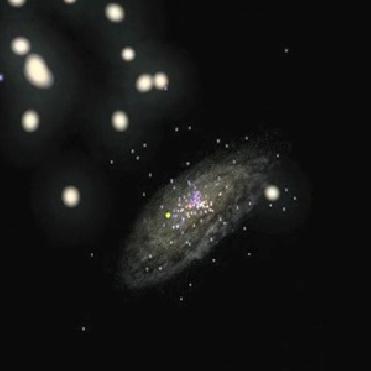
MELBOURNE (PTI): Around a quarter of the star clusters in Milky Way have actually invaded from other galaxies, a new study has found.
The research, conducted by an astronomer from Swinburne University of Technology, showed that many of the star clusters in the galaxy are foreigners - having been born elsewhere and then migrating to Milky Way.
"It turns out that many of the stars and star clusters we see when we look into the night sky are not natives, but aliens from other galaxies," Swinburne astronomer Duncan Forbes said adding "They have made their way into our galaxy over the last few billion years."
The study confirms the suspicion of astronomers who had thought that some star clusters, containing around a million stars each, were foreign to our galaxy, but it was difficult to positively identify which ones.
Using the data from Hubble Space Telescope, Forbes along with his Canadian colleague Professor Terry Bridges, examined old star clusters within the Milky Way galaxy.
They compiled the largest ever high-quality database to record the age and chemical properties of each of these clusters.
"Using this database we were able to identify key signatures in many of the star clusters that gave us tell-tale clues as to their external origin," Forbes said.
"We determined that these foreign-born star clusters actually make up about one quarter of our Milky Way star cluster system.
That implies tens of millions of accreted stars, those that have joined and grown our galaxy, from star clusters alone," the researchers said.
The study also suggests that the Milky Way may have swallowed-up more dwarf galaxies than was previously thought.
"We found that many of the foreign clusters originally existed within dwarf galaxies - that is �mini� galaxies of up to 100 million stars that sit within our larger Milky Way. Our work shows that there are more of these accreted dwarf galaxies in our Milky Way than was thought."
Astronomers had been able to confirm the existence of two accreted dwarf galaxies in our Milky Way, but the research suggests there might be as many as six yet to be discovered.
Although the dwarf galaxies are broken-up and their stars assimilated into the Milky Way, the star clusters of the dwarf galaxy remain intact and survive the accretion process.
"This will have to be explored further, but it is a very exciting prospect that will help us to better understand the history of our own galaxy," they said.
 Previous Article
Previous Article Next Article
Next Article













The Indian Air Force, in its flight trials evaluation report submitted before the Defence Ministry l..
view articleAn insight into the Medium Multi-Role Combat Aircraft competition...
view articleSky enthusiasts can now spot the International Space Station (ISS) commanded by Indian-American astr..
view article